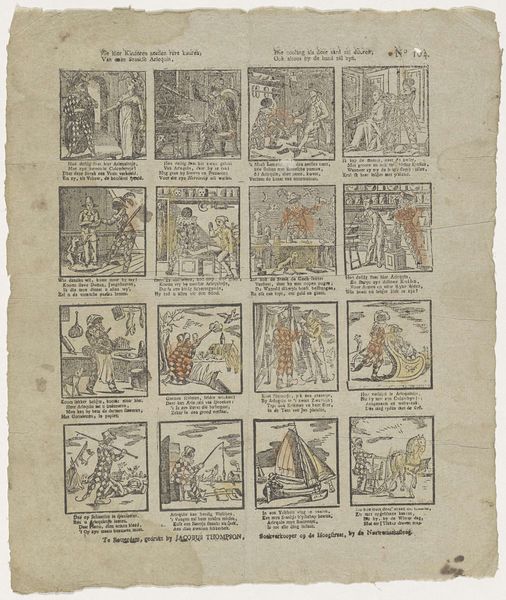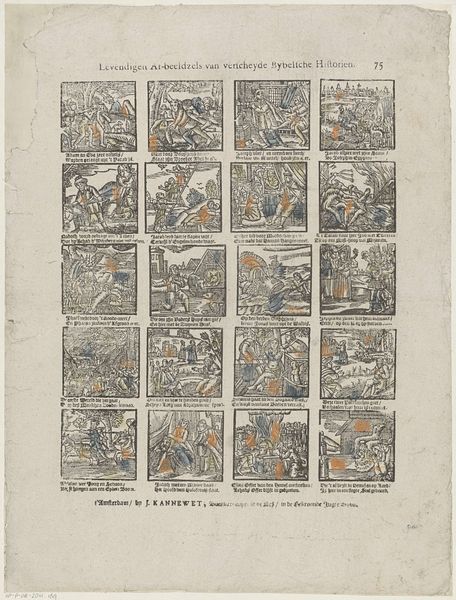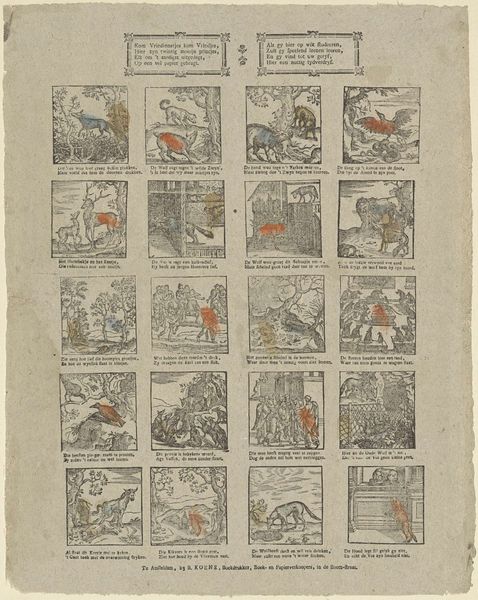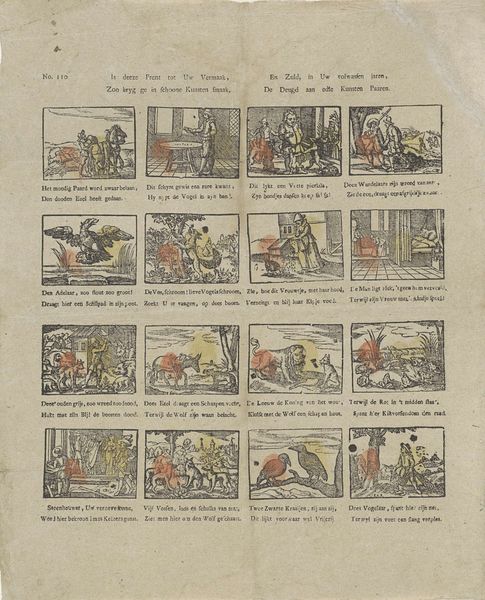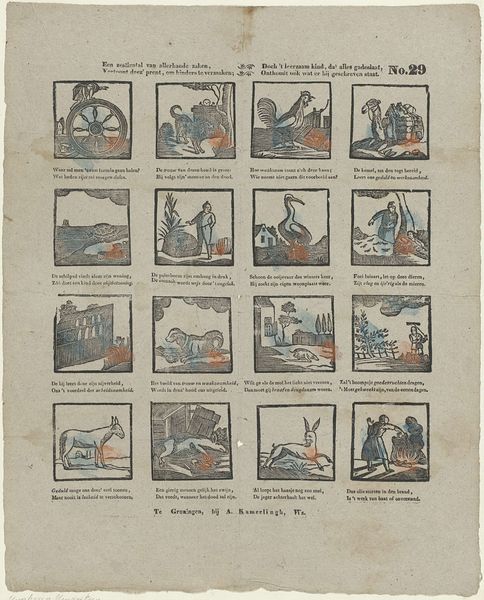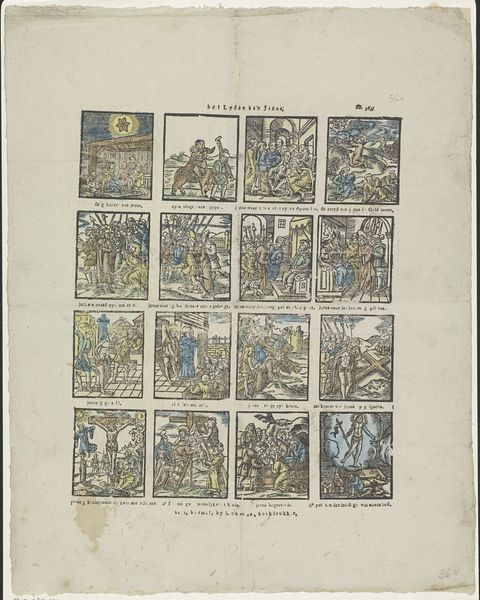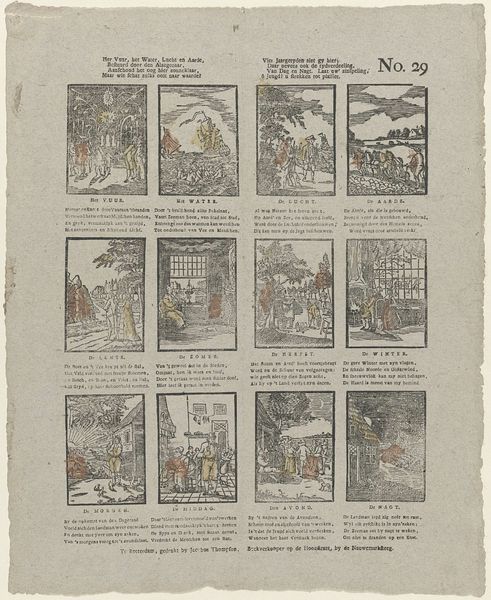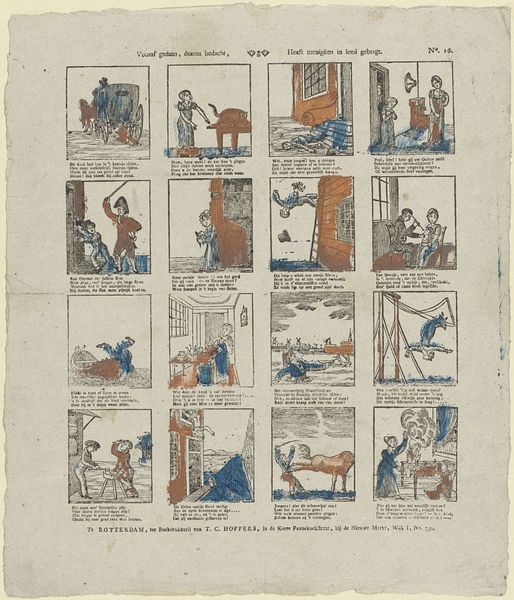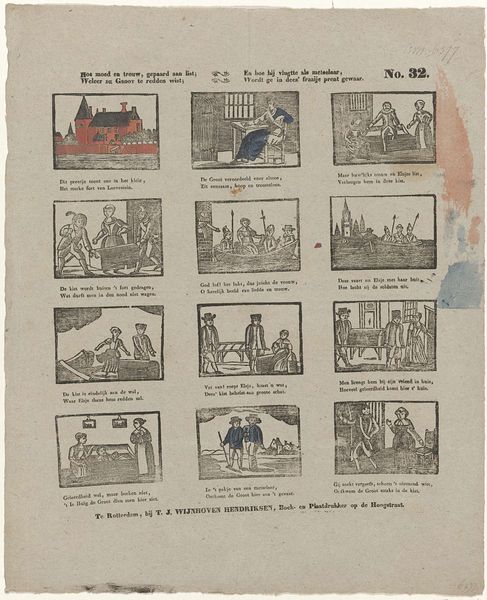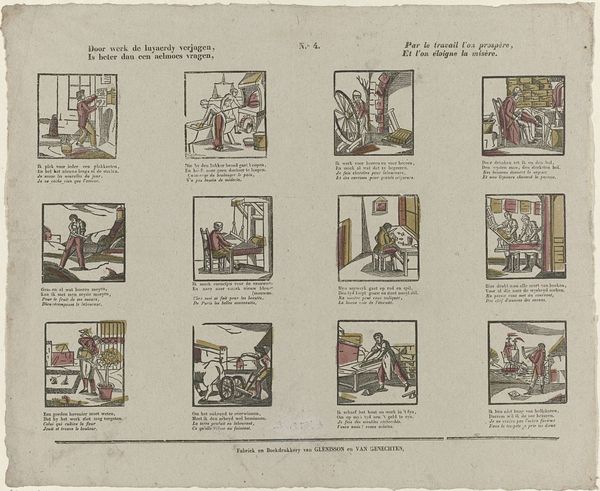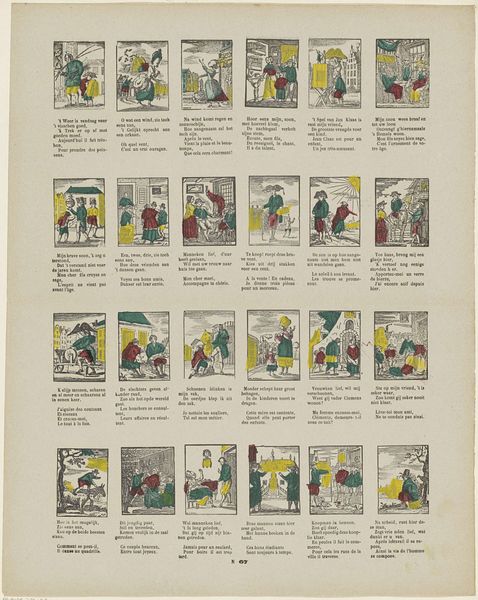
Hier ziet ge, ô jeugd het boeren leeven, / Ook beesten die ons voordeel geven, / Zy strekken beide ons tot vreugd, / In werkzaamheid, gepaard met deugd 1831 - 1854
0:00
0:00
graphic-art, print, engraving
#
graphic-art
#
comic strip sketch
#
aged paper
#
light pencil work
#
quirky sketch
#
narrative-art
# print
#
sketch book
#
personal sketchbook
#
sketchwork
#
folk-art
#
sketchbook drawing
#
genre-painting
#
storyboard and sketchbook work
#
sketchbook art
#
engraving
Dimensions: height 420 mm, width 336 mm
Copyright: Rijks Museum: Open Domain
This uncut, hand-colored broadsheet was printed by Erve H. Rynders, likely in the late 18th century, using woodcut and letterpress techniques. The composition is structured into a grid of twenty vignettes, each a small tableau of rural life. The scenes are simple, yet each contains a didactic verse. The layout encourages a semiotic reading, where each image operates as a signifier. The figures, rendered in simplified forms and punctuated by limited use of color, become symbols representing labor, virtue, and the natural order. The scenes, framed in such a rigid structure, present a vision of the countryside as an ordered space where humans and animals work in concert. It presents the countryside as an ordered moral and social universe, a kind of visual manual of ideal conduct. Look closely at the arrangement and the relationship between text and image. Does it feel harmonious, or is there a tension between the two? Broadsheets like these were not just decorative, but tools for shaping a worldview.
Comments
No comments
Be the first to comment and join the conversation on the ultimate creative platform.
